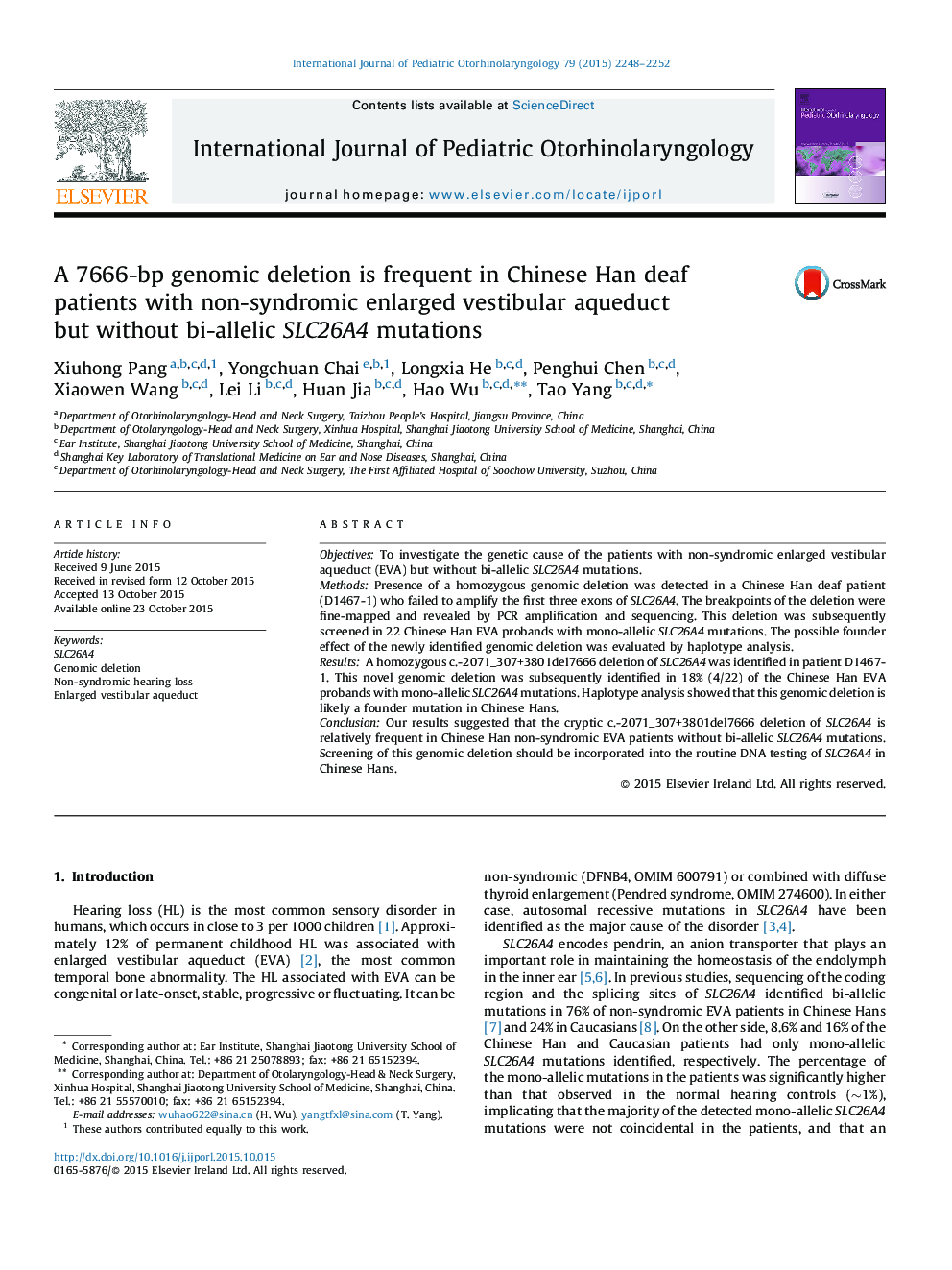| Article ID | Journal | Published Year | Pages | File Type |
|---|---|---|---|---|
| 4111595 | International Journal of Pediatric Otorhinolaryngology | 2015 | 5 Pages |
ObjectivesTo investigate the genetic cause of the patients with non-syndromic enlarged vestibular aqueduct (EVA) but without bi-allelic SLC26A4 mutations.MethodsPresence of a homozygous genomic deletion was detected in a Chinese Han deaf patient (D1467-1) who failed to amplify the first three exons of SLC26A4. The breakpoints of the deletion were fine-mapped and revealed by PCR amplification and sequencing. This deletion was subsequently screened in 22 Chinese Han EVA probands with mono-allelic SLC26A4 mutations. The possible founder effect of the newly identified genomic deletion was evaluated by haplotype analysis.ResultsA homozygous c.-2071_307+3801del7666 deletion of SLC26A4 was identified in patient D1467-1. This novel genomic deletion was subsequently identified in 18% (4/22) of the Chinese Han EVA probands with mono-allelic SLC26A4 mutations. Haplotype analysis showed that this genomic deletion is likely a founder mutation in Chinese Hans.ConclusionOur results suggested that the cryptic c.-2071_307+3801del7666 deletion of SLC26A4 is relatively frequent in Chinese Han non-syndromic EVA patients without bi-allelic SLC26A4 mutations. Screening of this genomic deletion should be incorporated into the routine DNA testing of SLC26A4 in Chinese Hans.
